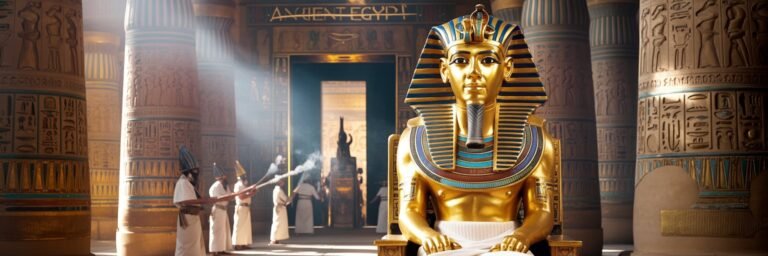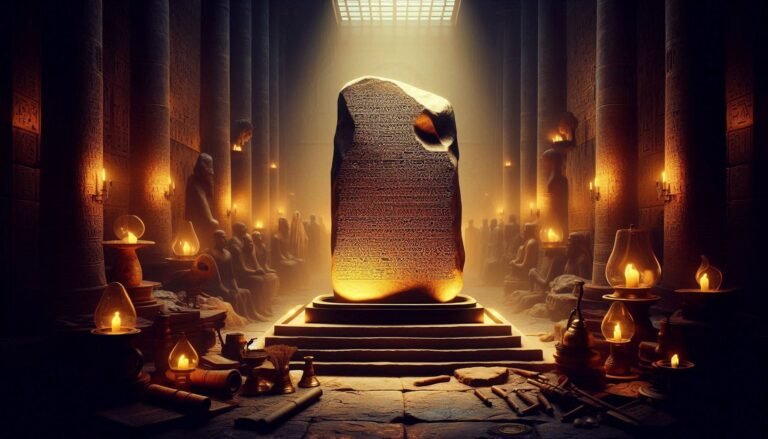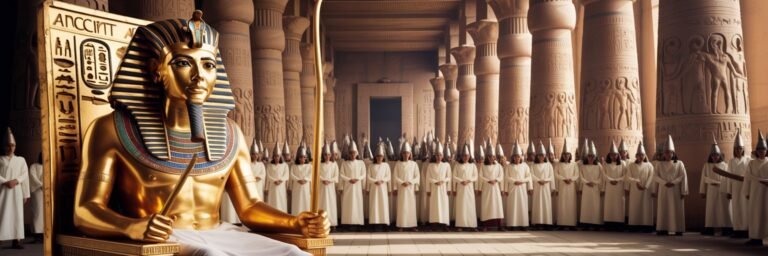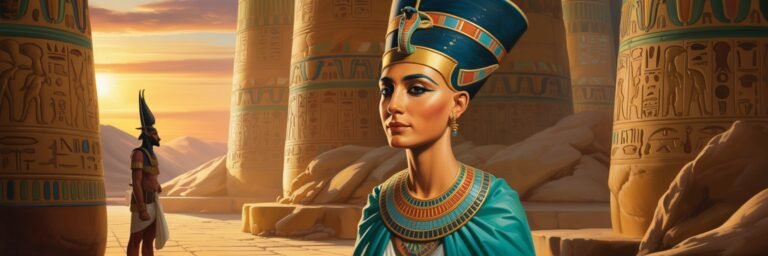INTRODUCTION
The land of the Pharaohs, the gift of the Nile, a civilization that stood the test of time—Ancient Egypt is not just a chapter in history, it is a saga of humanity itself. From the rise of the first Pharaoh, Narmer, in 3100 B.C.E, until the end of Cleopatra’s reign in 30 B.C.E, the Egyptian civilization was a testament to human will, innovation, and cultural magnificence. Join us as we venture into the heart of this enigmatic period, trying to unravel the real story of Ancient Egypt, beyond the pyramids, Sphinx, and mummified bodies.
HISTORICAL BACKGROUND
Ancient Egypt’s story is segmented into three major periods—The Old Kingdom (2686—2181 B.C.E), The Middle Kingdom (2055—1650 B.C.E), and The New Kingdom (1550—1070 B.C.E) sprinkled with Intermediate Periods of chaos and disunion. The Old Kingdom is often known as the age of the Pyramids, represented by grandeur structures like the Great Pyramid of Giza—built for Pharaoh Khufu around 2580—2560 B.C.E.
Then came the Middle Kingdom, a time often referred to as the classic period of Egyptian Literature and Art. This period marked the reunification of Egypt after years of political turmoil, led by a powerful Pharaoh, Mentuhotep II.
Finally, the New Kingdom, notable for some of the most celebrated Pharaohs, including Tutankhamun, Akhenaten, and Queen Hatshepsut. This was an era characterized by military conquest, wealth, and architectural splendor.
THEORIES AND INTERPRETATIONS
Over the years, numerous theories have surfaced regarding Ancient Egypt, challenging the mainstream understanding. The Orthodox Egyptology posits that great structures like Pyramids were built using chisels, ropes, and immense manpower. However, alternative theories propose that advanced technologies may have been present. Proponents of this view—like Graham Hancock and Robert Bauval—point towards the precise alignment of pyramids to constellations, implying possible knowledge of advanced astronomy and mathematics.
Another interpretation revolves around Akhenaten’s, controversial Pharaoh of the 18th dynasty. Celebrated as the first monotheist, Akhenaten replaced the old pantheon with a single deity, the Aten. Sigmund Freud, in his book “Moses and Monotheism”, controversially proposed that Akhenaten was the progenitor of Jewish monotheism, leading to a new perspective on religious development in the ancient world.
MYSTERIES AND CONTROVERSIES
Ancient Egypt is synonymous with mysteries. The purpose and construction method of the pyramids continue to perplex us. Is it a tomb, a celestial observatory, or a beacon for extra-terrestrial beings? Egyptologists are still seeking answers.
Another area of controversy is the causes of Ancient Egypt’s downfall. While some attribute it to repeated invasions, others point to internal revolt, economic crises, or climate change. The cause remains contentious among historians.
SYMBOLISM AND CULTURAL SIGNIFICANCE
Symbolism was fundamental to Ancient Egypt’s fabric, be it in their hieroglyphics, art, or architecture. The ankh, the symbol of life, the djed pillar for stability, the was scepter for power—all embodied specific meanings. Even the monumental pyramids are considered symbols of the Pharaoh’s journey to immortality.
Modern studies have investigated the significance of myth and ritual in Ancient Egyptian daily life, opening up new understandings of how religion permeated all aspects of their life, influencing their conduct, morality, and perceptions of life and death.
MODERN INVESTIGATIONS
With technological innovations, more and more information is coming forth. Through DNA testing, we now know that inbreeding was prevalent among Egypt’s royal family, including Tutankhamun. His genome analysis revealed that he was a product of incest, his parents being siblings—potentially leading to his untimely death at the age of eighteen.
Ground-penetrating radar technology has allowed archaeologists to discover possible hidden chambers in Tutankhamun’s tomb, hinting towards the possibility of finding the elusive final resting place of Queen Nefertiti.
LEGACY AND CONCLUSION
Despite the sands of time, Ancient Egypt’s legacy continues to resonate. Egyptomania— the fascination with everything Egyptian— had gripped the world ever since the discovery of Tutankhamun’s tomb in 1922.
Egypt’s legacy spans across fields. Its Hieroglyphics inspired the development of modern writing systems. The Rosetta Stone, discovered in 1799, provided the key to deciphering this enigmatic oldest of scripts. Their knowledge of geometry, embodied in the pyramids, influenced the field of mathematics. The medical treatises written in papyrus scrolls provided some of the earliest known medical knowledge—serving as the foundation for modern medicine.
More than history, Ancient Egypt is a vast canvas upon which humanity painted its aspirational masterpieces. It remains not just a cultural treasure but also a testament to human potential. As more shrouds are removed, we may find that Ancient Egypt is not just a keeper of mysteries, but also a harbinger of revelations about our past, present, and possibly our future.






